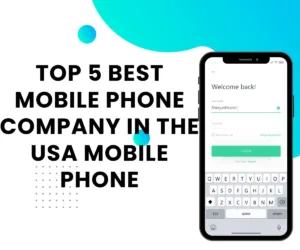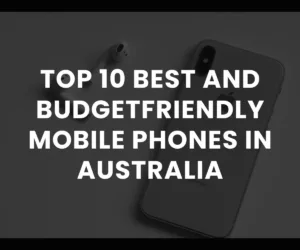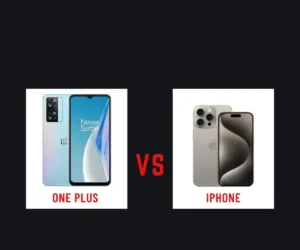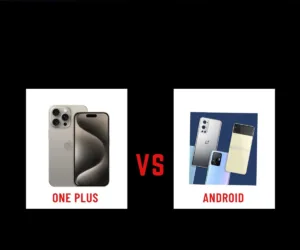In the ever-evolving landscape of smartphones, the debate between iPhone and Android users has become a defining element of tech conversations. As an avid user and tech enthusiast, I’ve often found myself pondering the age-old question: Is iPhone really better than Android? In this article, I aim to unravel the layers of this ongoing smartphone saga, sharing insights based on my experiences and expertise in the field.
With a focus on simplicity and clarity, we’ll delve into key aspects that distinguish these two giants in the mobile world. From operating systems to performance, app ecosystems, design, and camera capabilities, we’ll break down the strengths and nuances that shape the iPhone and Android user experiences. By the end, we hope to shed light on whether the allure of the iPhone stands tall or if the diverse offerings of Android steal the spotlight. Let’s embark on this journey of exploration and discovery in the realm of smartphones.
| Aspect | iPhone | Android |
|---|---|---|
| Operating System | iOS – Seamless, user-friendly | Android – Open-source, customizable |
| Performance & Speed | A14 Bionic chip for efficiency | Snapdragon series for versatility |
| App Ecosystem | App Store – Curated, quality apps | Play Store – Vast, diverse selection |
| Design & Build | Iconic, sleek design | Diverse designs, cater to preferences |
| Camera Quality | Cutting-edge tech, Night mode | Multiple lenses, AI innovations |
Operating Systems: iOS vs. Android
As we kick off our exploration, let’s dive into the heart of smartphones – the operating systems. iOS, Apple’s proprietary system, boasts seamless integration and a user-friendly experience. Navigating through the iconic interface of iPhones, users find themselves immersed in an ecosystem designed for simplicity and efficiency.
On the flip side, Android, an open-source platform, offers a world of customization. This freedom allows users to tailor their experience, from widgets on the home screen to diverse app launchers. As someone who has toggled between the two, the question lingers: does the polished uniformity of iOS outshine the flexibility and versatility of Android?
iOS:
- Seamless integration within the Apple ecosystem.
- User-friendly interface for a smooth navigation experience.
- Exclusive features such as AirDrop and Handoff enhance connectivity.
Android:
- Open-source nature allows for extensive customization.
- Diverse range of devices from different manufacturers.
- Greater flexibility in choosing app sources beyond the official store.
In this technological tango the decision between iOS and Android hinges on the user’s preference for a tightly knit ecosystem or the freedom to tailor their smartphone experience. As a travel blogger these operating systems become the canvas on which I paint my digital travelogue and the choice is more than just a technicality—it’s a companion on my journeys.
Performance and Speed: iPhone vs. Android
Moving swiftly into the engine room, the performance and speed of smartphones play a pivotal role in user satisfaction. iPhones, powered by the A14 Bionic chip, boast impressive capabilities. The smooth multitasking and quick response times of iOS devices create an efficient user experience.
Android, on the other hand, relies on the Snapdragon series for its performance prowess. How does the Snapdragon chip measure up against Apple’s A-series chips, and does it translate to a noticeable difference in day-to-day usage? Let’s uncover the nuances of performance that shape our smartphone interactions.
Stay tuned as we delve deeper into the app ecosystems, design philosophies, and camera innovations that define the iPhone and Android experiences in the upcoming sections.
App Store:
- Curated selection for quality assurance.
- Exclusive apps optimized for iOS devices.
- Stringent app approval process ensures security
Play Store:
- Extensive variety with a wide range of app choices.
- Flexibility to download apps from various sources.
- Open environment encourages app experimentation
As a traveler relying on my smartphone as a digital toolkit the app ecosystem shapes the efficiency and convenience of my experiences. The debate between App Store and Play Store becomes more than a technicality—it’s about finding the right set of tools to enhance my journey.
Design and Build:
Shifting our focus to the physical realm, the design and build of smartphones contribute significantly to their appeal. iPhones are renowned for their iconic, sleek designs – a blend of elegance and timelessness. As someone who appreciates aesthetics, the question arises: does the minimalist approach of iPhones contribute to a more satisfying user experience?
Conversely, Android devices offer a diverse range of designs, catering to various tastes. The freedom to choose from a myriad of options provides users with a level of personalization not always found in the Apple ecosystem. Is this variety a key factor that puts Android ahead in the race for user preference
iPhone
- Iconic and minimalist design philosophy.
- Sleek and elegant aesthetics.
- Premium build quality for a luxurious feel.
Android
- Diverse designs from various manufacturers.
- Customization options to match personal style.
- Range of build materials for varied preferences.
As a travel blogger capturing moments from bustling markets to serene landscapes my smartphone is not just a tool but an extension of my storytelling. The design and build play a pivotal role in ensuring that my device not only functions seamlessly but also reflects the essence of my adventurous spirit.
Capturing Moments in Pixels
In the age of social media and instant sharing, the camera quality of smartphones plays a pivotal role. iPhones, equipped with cutting-edge camera technology and features like Night mode, redefine smartphone photography. The question lingers: does the iPhone’s camera magic truly set it apart from the competition?
Meanwhile, Android devices showcase their own innovations in the camera department. From multiple lenses to advanced AI capabilities, Android aims to provide a pixel-perfect world for photography enthusiasts. How do these innovations stack up against the iPhone’s prowess, and does it sway users in one direction or the other?
As we journey through these considerations, we’ll uncover the intricacies that shape the user experience on both sides of the spectrum. Stay tuned for the conclusive section where we weigh the pros and cons, ultimately determining whether the iPhone stands tall or if Android offers a compelling alternative.
iPhone:
- Advanced camera system with computational photography.
- Night mode for stunning low-light photography.
- High-quality video recording capabilities.
Android:
In the realm of travel blogging the camera is my passport to share the world’s beauty. The iPhone and Android devices each with their distinctive camera capabilities offer me the means to encapsulate the vibrant hues and emotions of my journeys ensuring that every snapshot is a story waiting to be told.
Final Verdict
Having traversed the diverse landscapes of iPhone and Android, it’s time to distill our exploration into a verdict. As an enthusiast with hands-on experience, the journey through operating systems, performance, app ecosystems, design, and camera capabilities has been enlightening.
iOS, with its seamless integration and user-friendly interface, creates an ecosystem that’s both efficient and aesthetically pleasing. The A14 Bionic chip’s performance prowess ensures smooth navigation, contributing to a satisfying user experience. The curated App Store, iconic design, and cutting-edge camera technology further enhance the allure of the iPhone.
On the Android side, the open-source nature brings forth a world of customization, providing users with unparalleled flexibility. The Snapdragon series powers a diverse range of devices, each catering to unique preferences. The expansive Google Play Store, diverse designs, and camera innovations showcase the versatility of the Android ecosystem.
So, is the iPhone truly better than Android, or does the allure of Android’s diversity steal the spotlight? The answer, as often is the case, lies in personal preference. If a seamless, curated experience with a sleek design and top-notch camera is your priority, the iPhone may be your ideal companion. On the other hand, if customization, diverse designs, and the freedom to choose resonate with you, an Android device might be the perfect fit.
In the end, both ecosystems have their strengths, and the choice between iPhone and Android ultimately boils down to individual preferences and priorities. As technology continues to evolve, the competition between these giants will undoubtedly fuel innovation, ensuring that users have compelling options, no matter which side of the smartphone spectrum they choose.







